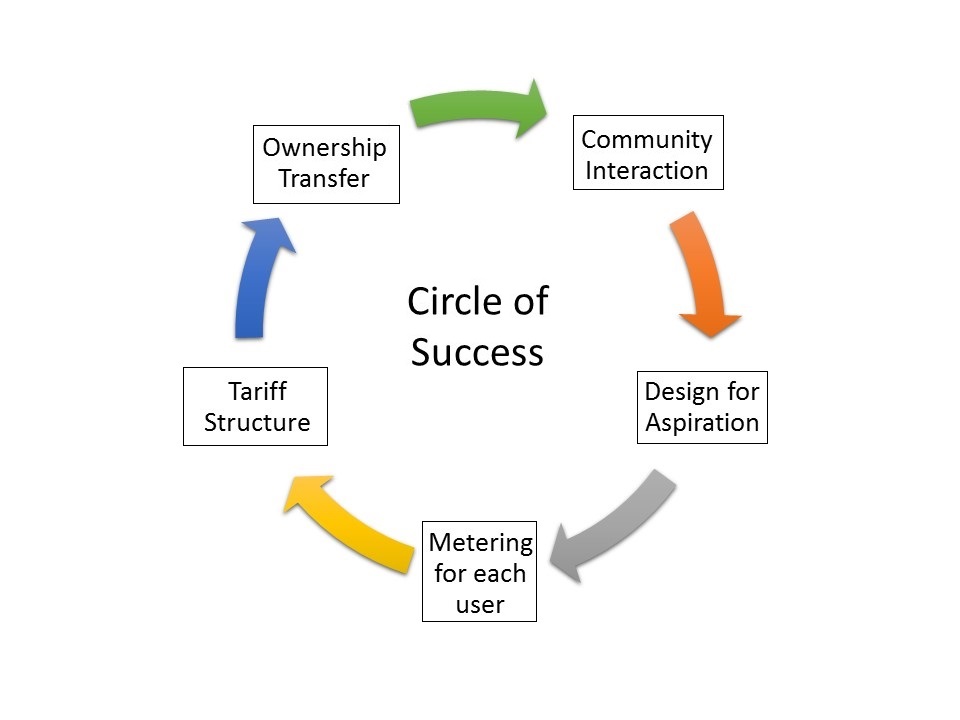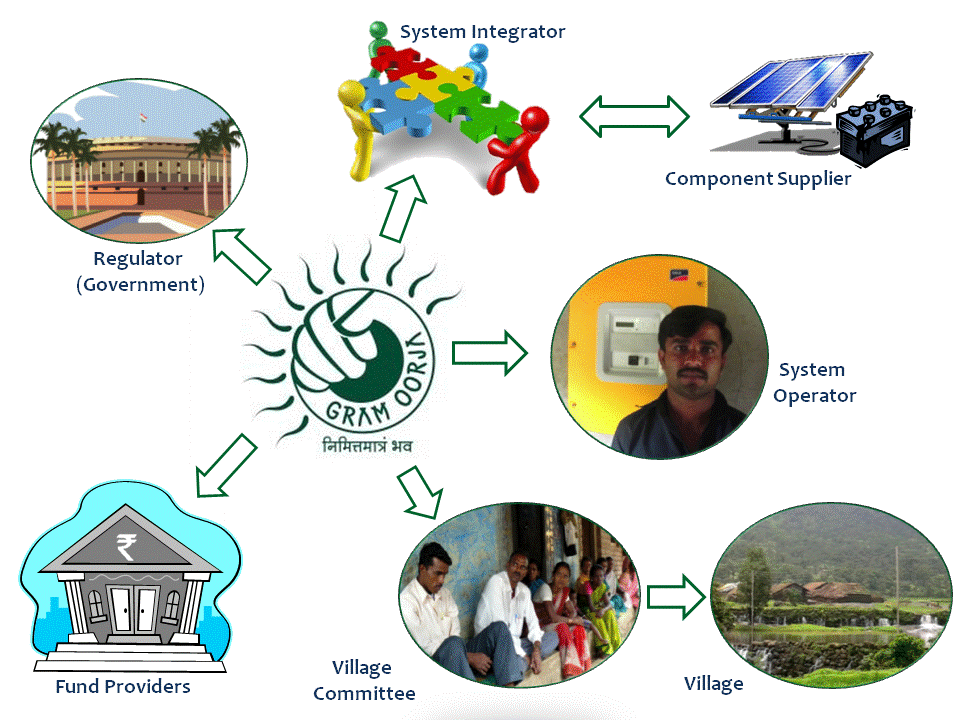
Reference: Census 2011 Data
In the three categories mentioned above, our main focus is on the 3rd category of villages. In these villages/hamlets, we believe that decentralized generation & distribution through solar micro- grids is the best way to do electrification. Gram Oorja provides electricity beyond lighting as against a solar home lighting system, in which 2-3 Lights & a mobile charging point is present. In our system, productive applications are given high priority so that villagers can augment their income also. In Gram Oorja's solar based micro grid implementation, all houses get single phase grid through distribution poles. Each house is metered and pays a monthly bill based on usage.
A micro-grid offers several implementation benefits over Solar Home Systems (SHS's) in a remote village:
This is just one central system to install, maintain and repair as against hundreds of household Systems. This can then be maintained by only a few trained persons.
It is more efficient and easier to expand a micro-grid system in stages as the power requirements of a village increases.
It is also profitable for running productive applications like pump, floor mill, computers so that villagers can earn income.
A larger solar power system can be combined with other sources of energy such as a micro-wind turbine or a bio-gas plant to ensure uninterrupted supply at times of reduced solar energy output, e.g. during the rainy/foggy season. Combining technologies into a hybrid system also reduces battery requirements, with multiple benefits.
Micro grids - the circle of success

For more on perspectives on micro-grids, click on the following links:
- How Private Mini-Grids Can End the Darkness of Rural India
- Rural Energy Alternatives in India: Opportunities in Financing and Community Engagement for Renewable Energy Microgrid Projects – A report produced by a group of second-year graduate students at Princeton University’s Woodrow Wilson School for Public and International Affairs.
- A Map of Distributed Renewable Energy (DRE) Micro-grids in India- Prayas Energy Group
- Solar Mini Grids: Challenges and the way forward (an independent blog report in WordPress)
- Profiling Gram Oorja and PARFI: Two Exciting Social Enterprises
- Mini-grids in rural India – Reflections of an entrepreneur
- Profiling Gram Oorja and PARFI: Two Exciting Social Enterprises
Role of Gram Oorja - as a Project Leader

